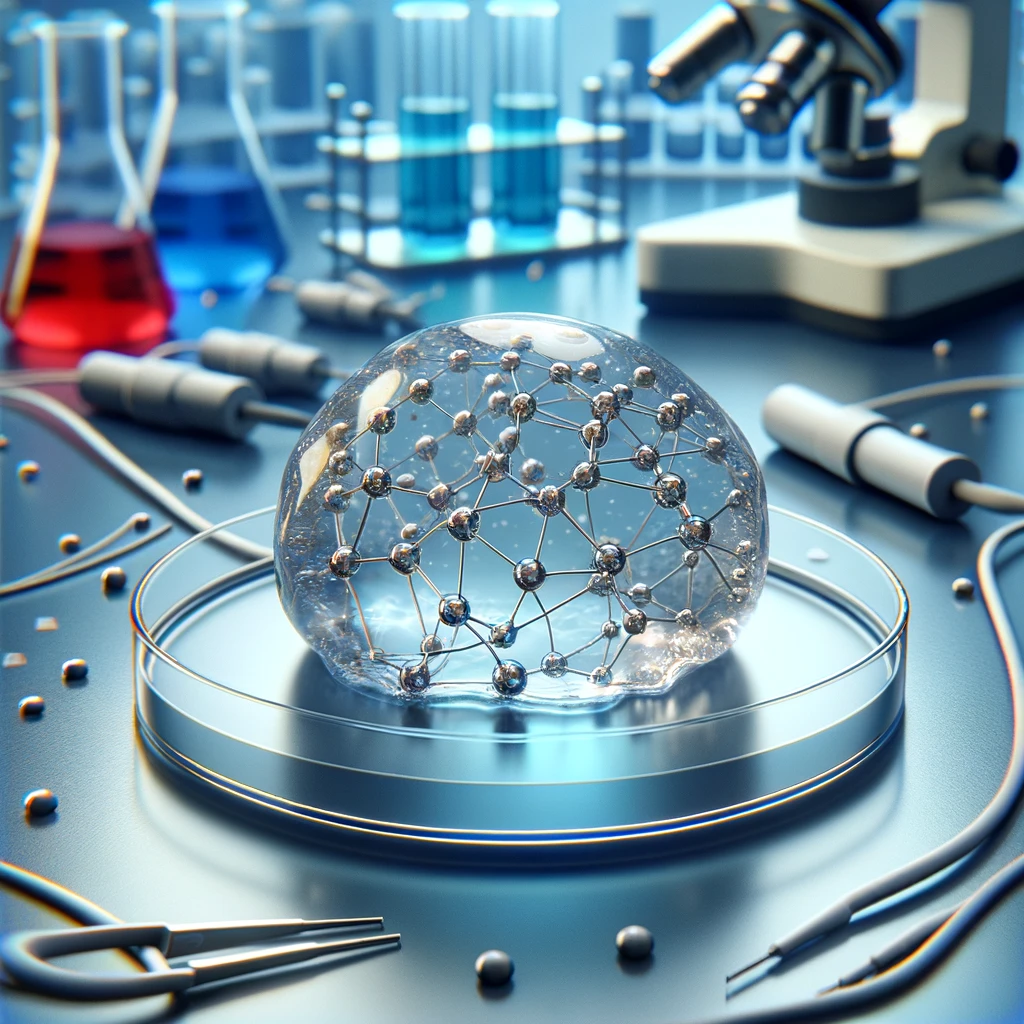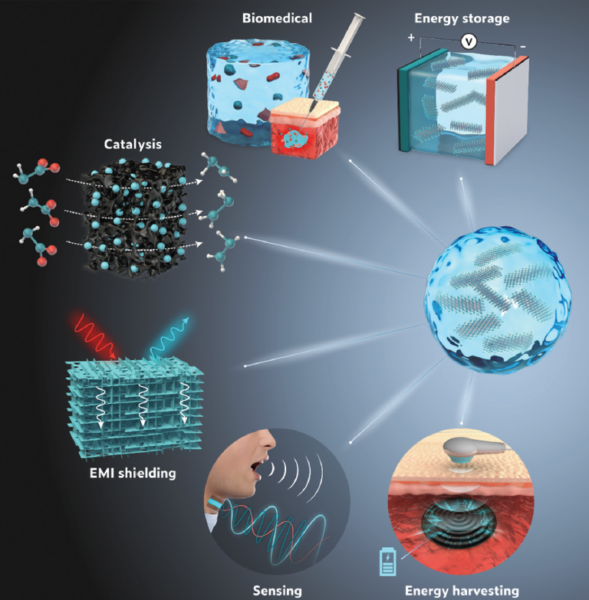MXene Hydrogels: A Plastics Industry Breakthrough

MXene hydrogels are emerging as innovative materials with promising applications across various industries, including conductive plastic materials and packaging.
MXenes are two-dimensional (2D) transition metal carbides, nitrides, or carbonitrides with unique properties that enhance the performance of hydrogels. By integrating MXenes into hydrogel systems, researchers have developed materials with improved mechanical strength, electrical conductivity, and versatile functionalities.
You can also read: Next-Gen Flame Retardants: Hydrogels & Aerogels
Fundamentals of MXene Hydrogels
MXenes exhibit a unique combination of hydrophilicity, metallic conductivity, and high aspect ratio morphology. These characteristics make them ideal for forming stable and functional hydrogels. The gelation mechanisms of MXene hydrogels involve complex interactions at the nanoscale, which require precise engineering to optimize their properties. MXene hydrogels consist of three-dimensional (3D) networks that combine the benefits of both hydrogels and MXenes, resulting in materials with enhanced performance and stability.
Types of Synthesis
The synthesis of these types of materials typically begins with the production of MXene nanosheets. Initially, this process involves selectively etching the “A” layers from parent MAX phases using fluoride-containing etching methods. Subsequently, researchers delaminate the resulting MXene nanosheets to form single—or few-layered structures. Next, they incorporate MXenes into hydrogels using various synthesis techniques, including vacuum-assisted filtration, interaction with graphene oxide (GO), and crosslinkers like polymers or metal ions. Ultimately, these methods form stable 3D structures essential for the gelation process.
Researchers often use crosslinkers to stabilize MXene hydrogels, which are crucial for maintaining the integrity of the 3D network. For instance, GO can facilitate interfacial interactions with MXene nanosheets, enhancing the mechanical properties of the hydrogels. Additionally, incorporating polymers into MXene-H can further improve their functionality. The choice of crosslinker and the synthesis method significantly influence the final properties, making it essential to optimize these parameters for specific applications.

Applications involving MXene hydrogels and their derivatives. Courtesy of MXene hydrogels: fundamentals and applications.
Applications in the Plastics Industry
MXene hydrogels hold significant potential for revolutionizing the plastics industry. Their unique properties can address several challenges traditional plastic materials face, paving the way for innovative applications and sustainable solutions.
- Enhanced Mechanical Properties: They exhibit superior mechanical strength and flexibility compared to conventional hydrogels. These qualities make them ideal for plastic composites, where they enhance durability and resilience.
- Electrical Conductivity: The metallic conductivity of MXenes imparts electrical conductivity to hydrogels, enabling the development of conductive plastic materials. These materials can be used in flexible electronics, sensors, and electromagnetic interference shielding applications.
- Sustainable Packaging: These materials can be incorporated into biodegradable and compostable plastic packaging materials. This contributes to reducing plastic waste and promoting environmental sustainability.
- Barrier Properties: They can enhance the barrier properties of plastic materials, making them more resistant to gas and moisture permeation. This is particularly valuable for food packaging applications, where maintaining product freshness is crucial.
- Self-Healing Plastics: Also, hydrogels can be engineered to have self-healing properties, allowing plastic materials to repair themselves after damage. This extends the lifespan of plastic products and reduces the need for replacements.
MXene Future Perspectives
The plastics industry can greatly benefit from the vast potential applications of MXene-H, driven by their unique properties and versatility. Ongoing research aims to optimize the synthesis and properties of MXene-H, thereby expanding their application range. However, researchers need to address challenges such as stability and precise control over the gelation process to fully realize the potential of these materials.
